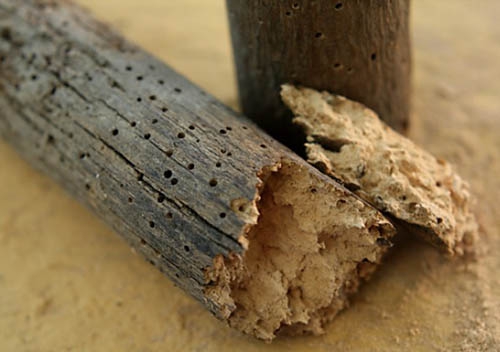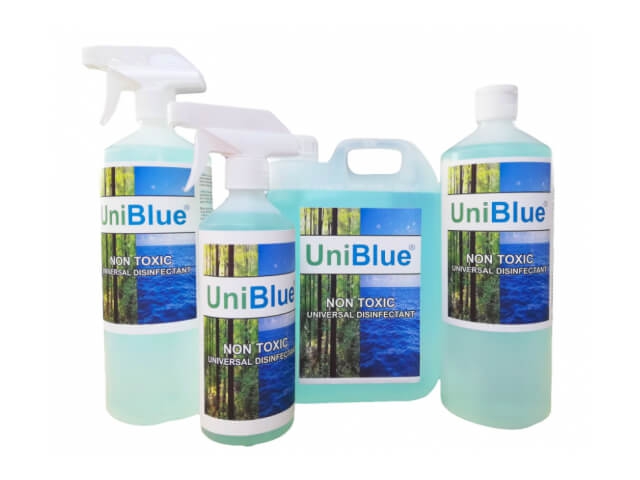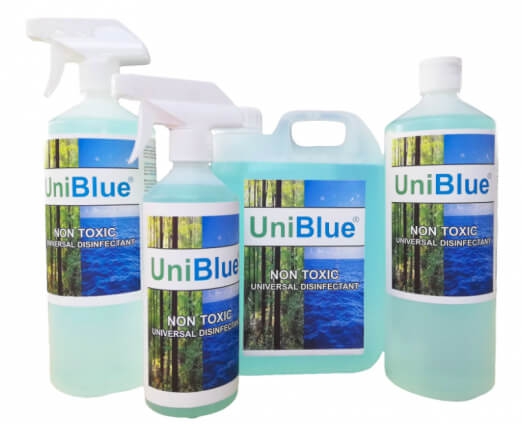- Contact 0870 350 7767
- |
- Advertise
Home > Advanced Chemical Specialties Ltd > Types of Mould you Find in the Home
Types of Mould you Find in the Home
 News and PR from Advanced Chemical Specialties Ltd - Published 05 November 2019
Any type of house can be the perfect vessel for mould to develop, regardless of how old or new the house is.
News and PR from Advanced Chemical Specialties Ltd - Published 05 November 2019
Any type of house can be the perfect vessel for mould to develop, regardless of how old or new the house is.
There are all sorts of different types of mould, but there are some that are more common than others, that can be found in the home.
Ideally, the first step would be to prevent mould from occurring, but we know this cant always be 100% fool proof, and environments change frequently.
So, with that in mind, lets take a look at the most common types of mould found in the house.
Aspergillus
This particular mould is long in spores that are able to form thick layers of mould on the walls. Its also a known allergen, which can do damage to those who inhale it. Severe reactions are possible, which include inflamed lungs and can bring on respiratory infections.
This mould is also capable of becoming toxic dependent on its environment and the species of the mould. Its also worth noting that other species of this mould is capable of producing deadly carcinogens.
Aureobasidium
This type of mould stakes its claim to surfaces that are painted, wooden and behind wallpaper and also be found around windows. Its brown, pink and black in colour and is spotty in appearance. This type of mould can enable people to develop allergic reactions and is also another common mould that can cause more severe reactions than others. You should avoid this particular type of mould coming into contact with skin. This is because of its ability to cause infections on skin, nails and in eyes. It also has the potential to cause the well-known skin condition dermatitis, which is an itchy rash which is known to be difficult to treat.
Cladosporium
This mould can be found in both cool and warm areas, which doesnt leave it much place not to call home! Look out for olive-green or brown coloured mould with a suede-like texture. This mould grows in areas such as carpets and older fabrics, but also inhabits wood such as floorboards and wooden furniture. This sneaky mould can, unfortunately, cause respiratory and breathing problems for homeowners that have this type in their homes. It also can cause allergic relations in the throat, nose, eyes and skin.
Penicillin
Quite possibly the staple image of mould, penicillin is easily recognisable with its bluey-green colour and fuzzy velvet-like texture, often seen floating around in that one mug we forgot to bring downstairs. Its usually found where water damage is, and there are not many places it wont make itself comfy. From carpets and wallpaper to inside mattresses, it spreads fast and around the home. If penicillin grows indoors, it can cause all kinds of horrible respiratory issues, sinus infections and allergic reactions.
Ulocladium
Ulocladium is found both inside and out and is typically found in areas where water is prominent and around condensation, such as bathrooms, kitchens, and basements. Another place to find Ulocladium are places that experience high levels of water damage such as walls and floors in buildings or homes that have experienced a flood.
Ideally, the first step would be to prevent mould from occurring, but we know this cant always be 100% fool proof, and environments change frequently.
So, with that in mind, lets take a look at the most common types of mould found in the house.
Aspergillus
This particular mould is long in spores that are able to form thick layers of mould on the walls. Its also a known allergen, which can do damage to those who inhale it. Severe reactions are possible, which include inflamed lungs and can bring on respiratory infections.
This mould is also capable of becoming toxic dependent on its environment and the species of the mould. Its also worth noting that other species of this mould is capable of producing deadly carcinogens.
Aureobasidium
This type of mould stakes its claim to surfaces that are painted, wooden and behind wallpaper and also be found around windows. Its brown, pink and black in colour and is spotty in appearance. This type of mould can enable people to develop allergic reactions and is also another common mould that can cause more severe reactions than others. You should avoid this particular type of mould coming into contact with skin. This is because of its ability to cause infections on skin, nails and in eyes. It also has the potential to cause the well-known skin condition dermatitis, which is an itchy rash which is known to be difficult to treat.
Cladosporium
This mould can be found in both cool and warm areas, which doesnt leave it much place not to call home! Look out for olive-green or brown coloured mould with a suede-like texture. This mould grows in areas such as carpets and older fabrics, but also inhabits wood such as floorboards and wooden furniture. This sneaky mould can, unfortunately, cause respiratory and breathing problems for homeowners that have this type in their homes. It also can cause allergic relations in the throat, nose, eyes and skin.
Penicillin
Quite possibly the staple image of mould, penicillin is easily recognisable with its bluey-green colour and fuzzy velvet-like texture, often seen floating around in that one mug we forgot to bring downstairs. Its usually found where water damage is, and there are not many places it wont make itself comfy. From carpets and wallpaper to inside mattresses, it spreads fast and around the home. If penicillin grows indoors, it can cause all kinds of horrible respiratory issues, sinus infections and allergic reactions.
Ulocladium
Ulocladium is found both inside and out and is typically found in areas where water is prominent and around condensation, such as bathrooms, kitchens, and basements. Another place to find Ulocladium are places that experience high levels of water damage such as walls and floors in buildings or homes that have experienced a flood.
Other announcements from Advanced Chemical Specialties Ltd
-
-
UniBlue: Non-Toxic Universal Disinfection
We first got involved with Uniblue back in early 2019 before the world had encountered the COV-SARS- 2 virus.
02 Nov 2020
-
Expert opinion on using Uniblue against Corona Virus
We know Uniblue has been tested to EN Standards 14476 against Envelope and Non-Envelope Viruses. We have received some new expert opinion in regards to Uniblue killing the Corona Virus.
06 Aug 2020
-








